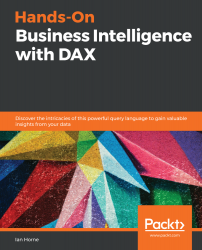Now, let's walk through a hands-on example of building a simple data model. We'll start by importing data from an Access database. Once the data has been imported, we'll refine the model by renaming the tables and columns, hiding unused data, and ensuring that we have created the appropriate relationships.
Getting data into your data model
Building your first data model
In this example, we'll use Power BI Desktop to walk through the process of importing data and building a simple data model. In the next chapter, we'll look at how to import data using Excel Power Pivot and SSAS Tabular.
If you want to follow along with the examples in the rest of this book, you can download copies of the Access databases...



